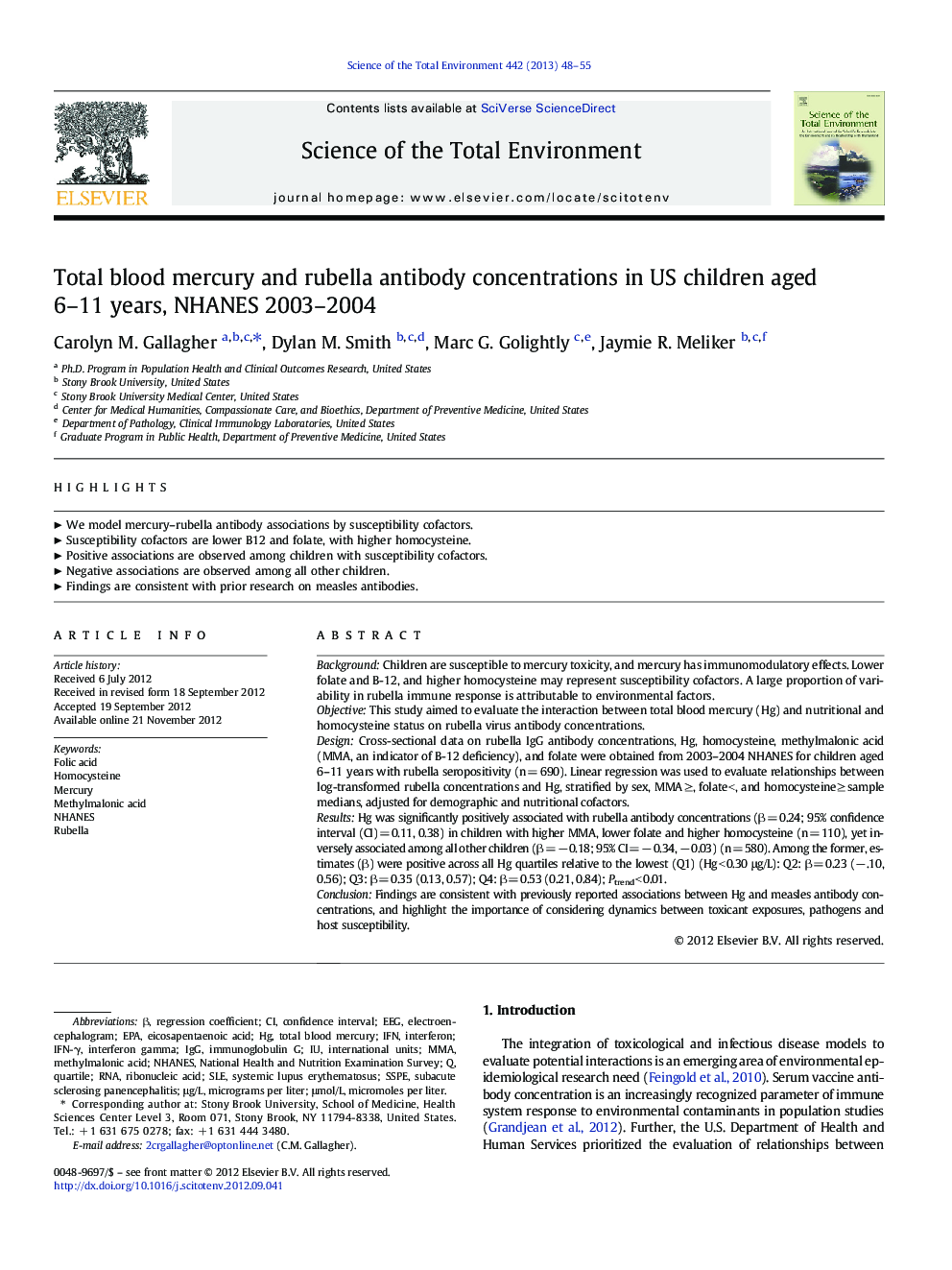| کد مقاله | کد نشریه | سال انتشار | مقاله انگلیسی | نسخه تمام متن |
|---|---|---|---|---|
| 4428974 | 1619811 | 2013 | 8 صفحه PDF | دانلود رایگان |

BackgroundChildren are susceptible to mercury toxicity, and mercury has immunomodulatory effects. Lower folate and B-12, and higher homocysteine may represent susceptibility cofactors. A large proportion of variability in rubella immune response is attributable to environmental factors.ObjectiveThis study aimed to evaluate the interaction between total blood mercury (Hg) and nutritional and homocysteine status on rubella virus antibody concentrations.DesignCross-sectional data on rubella IgG antibody concentrations, Hg, homocysteine, methylmalonic acid (MMA, an indicator of B-12 deficiency), and folate were obtained from 2003–2004 NHANES for children aged 6–11 years with rubella seropositivity (n = 690). Linear regression was used to evaluate relationships between log-transformed rubella concentrations and Hg, stratified by sex, MMA ≥, folate <, and homocysteine ≥ sample medians, adjusted for demographic and nutritional cofactors.ResultsHg was significantly positively associated with rubella antibody concentrations (β = 0.24; 95% confidence interval (CI) = 0.11, 0.38) in children with higher MMA, lower folate and higher homocysteine (n = 110), yet inversely associated among all other children (β = − 0.18; 95% CI = − 0.34, − 0.03) (n = 580). Among the former, estimates (β) were positive across all Hg quartiles relative to the lowest (Q1) (Hg < 0.30 μg/L): Q2: β = 0.23 (− .10, 0.56); Q3: β = 0.35 (0.13, 0.57); Q4: β = 0.53 (0.21, 0.84); Ptrend < 0.01.ConclusionFindings are consistent with previously reported associations between Hg and measles antibody concentrations, and highlight the importance of considering dynamics between toxicant exposures, pathogens and host susceptibility.
► We model mercury–rubella antibody associations by susceptibility cofactors.
► Susceptibility cofactors are lower B12 and folate, with higher homocysteine.
► Positive associations are observed among children with susceptibility cofactors.
► Negative associations are observed among all other children.
► Findings are consistent with prior research on measles antibodies.
Journal: Science of The Total Environment - Volume 442, 1 January 2013, Pages 48–55